Root Awakening: Seedlings may be microgreens
Sign up now: Get ST's newsletters delivered to your inbox
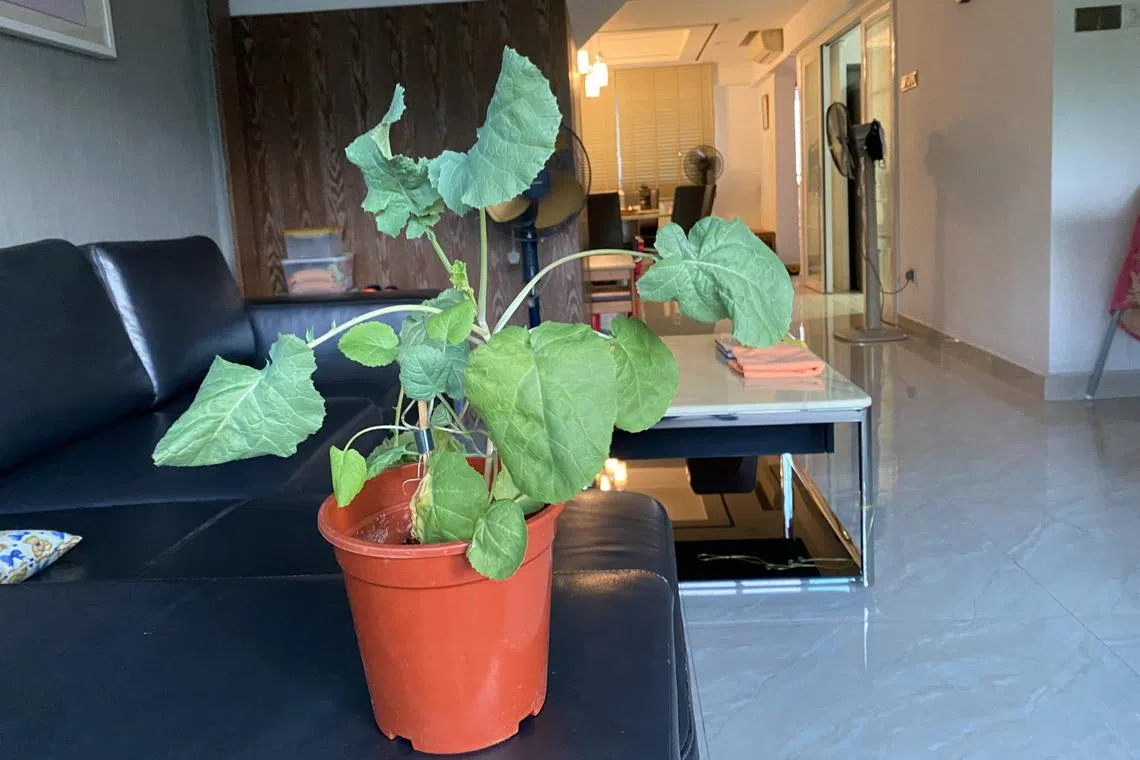
This plant is likely a type of kale.
PHOTO: RYAN KWEK & ETHAN KWEK
Wilson Wong
Follow topic:
Seedlings could be kale, padi or wheat
We grew these two plants from seeds that we got from a children’s carnival. What are the plants that grew from the seeds? Will they bear flowers?
Ryan and Ethan Kwek
The first plant appears to be a type of kale, while the other one is likely padi or wheat. They are both grass-like plants. Were these seeds from a packet to be grown as microgreens?
These edible plants need to be grown in a sunny spot with direct sunlight for at least six hours a day for optimal growth. The soil should be fertile, well-draining and moisture-retentive.
If the second plant is padi, especially the type that grows in flooded fields, place it in a dish of water. Change the water periodically to reduce the likelihood of mosquitoes breeding. Once the plant matures, it will flower and produce fruit, which, when dehusked, will be rice grains.
Wheat can be tricky to grow in Singapore’s hot tropical climate. This plant thrives in cool climates and will exhibit sluggish growth here.
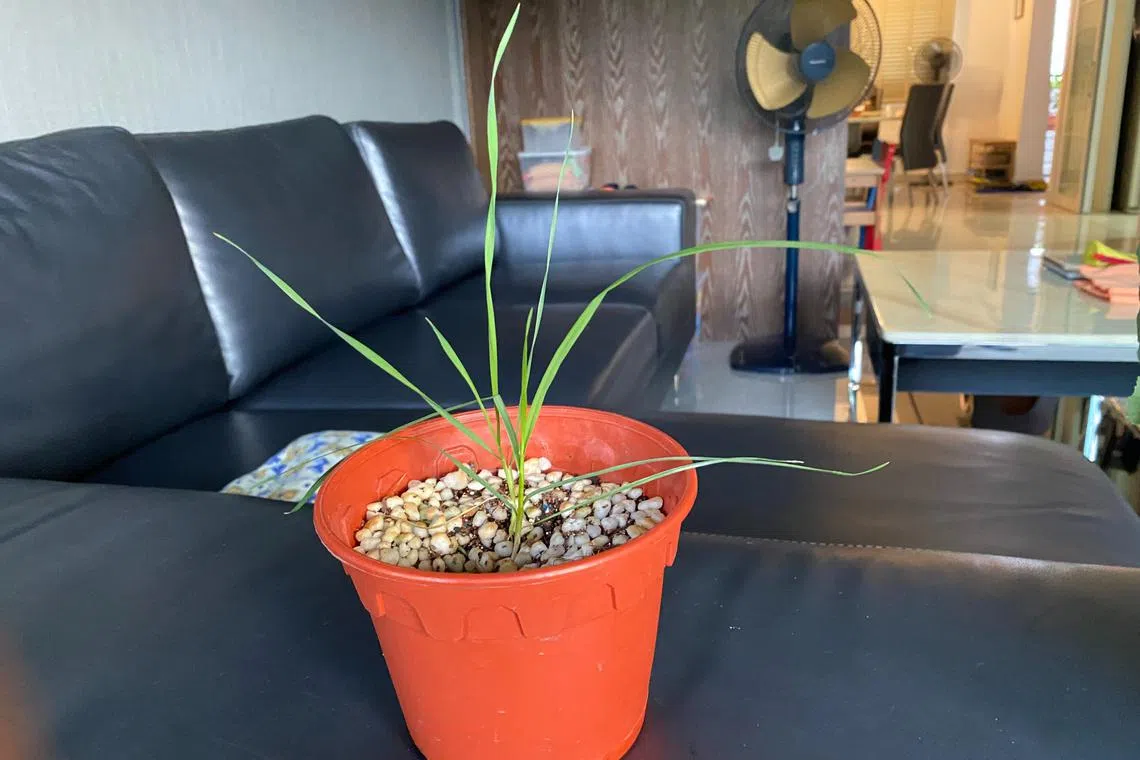
This grass-like plant is likely padi or wheat.
PHOTO: RYAN AND ETHAN KWEK
As for the kale, its lower leaves can be cut and harvested. This plant has also not been seen to flower in large specimens grown outdoors here.
Spots likely to be a type of scale insect
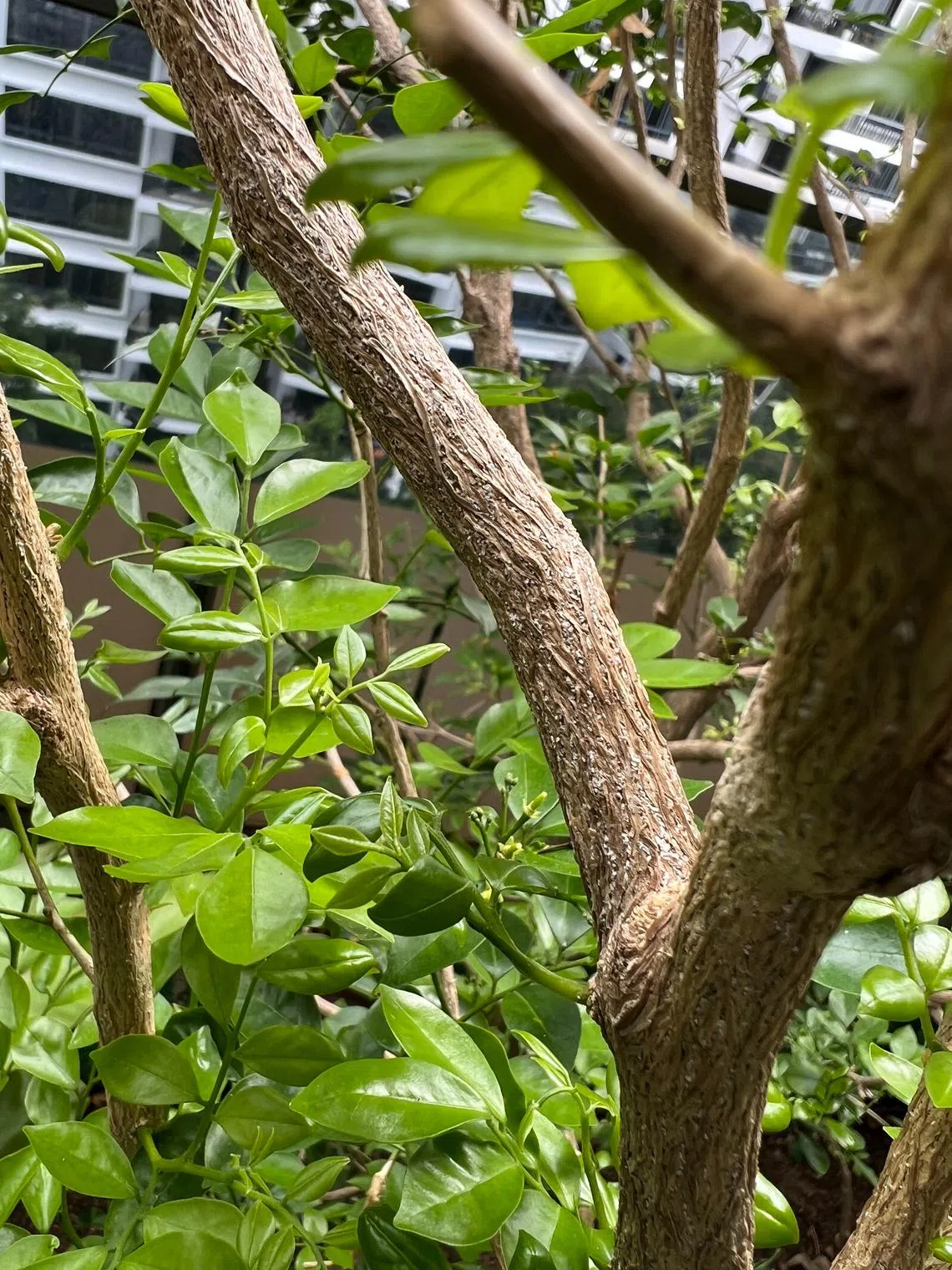
The white spots on this Murraya plant are likely scale insects, a sap-sucking pest that often appears on perennial woody plants.
PHOTO: MANFRED KOK
My Murraya plants have white scaly spots on them. What are these spots and how do I get rid of them?
Manfred Kok
The spots could be scale insects, a sap-sucking pest that appears on perennial woody plants. Use a magnifying glass for a closer inspection.
You can use a soft brush to remove them and then spray the plant with summer oil, a pesticide available for sale in local nurseries, to suffocate the rest. Several applications and complete coverage are often required to adequately control the pests.
Tracks may be due to leaf miners
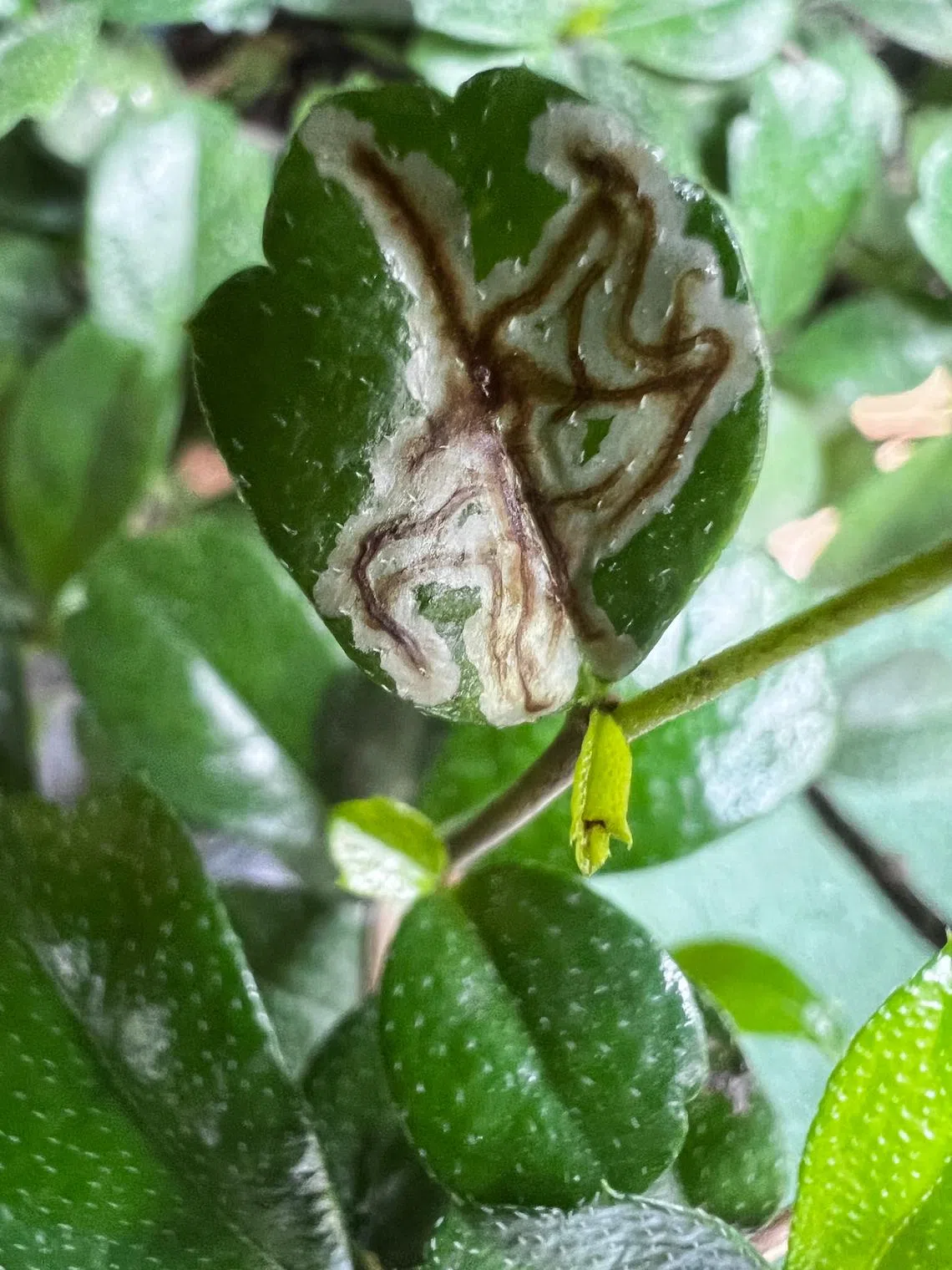
This Fukien Tea Tree’s damaged leaves will not recover.
PHOTO: TAN BEE PING
What is wrong with my bonsai’s leaves and how do I fix it?
Tan Bee Ping
Your Fukien Tea Tree (botanical name: Ehretia microphylla) has been infested with leaf miners. Remove and discard the affected leaves.
To prevent infestations, put up yellow sticky traps to reduce the activity of adult leaf miners.
As you are growing the plant for ornamental purposes, you can apply a preventive pesticide such as spinosad and abamectin, which are available from local nurseries and online shopping platforms.
Follow the instructions on the label and test on a small part of the plant to check for any adverse reactions before spraying the entire plant.
Frequency of watering depends on a range of factors
As a novice gardener, how do I gauge the amount of water a plant needs and the frequency of watering? I have five different plants in a pot and one seems to be towering over the other four, while another is turning yellow.
Jack Ong
This is difficult to answer without knowing what plants you have and their growing conditions.
Different plants have different growth requirements. Some plants need to have a constantly moist root zone, while others should be left to dry out before watering again.
The larger the pot, the more it can contain – meaning more water can be retained in the plant’s root zone. A more aerated, well-draining growing mix will dry out faster than one that has finer particles or is richer in organic matter.
Also, a large plant growing in a small pot will generally require more watering than a smaller plant in a large pot. A windy and sunny location will also cause plants to transpire (give off water vapour) more and the growing mix to dry out faster.
When watering plants, do so thoroughly. Excess water should trickle out from the drainage holes at the base of the pot.
Do not let the plants sit in the excess water for long periods, as this can create a waterlogged root zone that is devoid of oxygen. Such a situation will kill the roots or lead to disease.
While tall plants can generally be pruned, some – like palms – cannot, as there is only one growing point. You may want to move the taller plant to grow elsewhere, as pruning can sometimes also affect the look and growth of the plant.
Yellowing leaves can be due to many factors, but usually are due to a lack of nutrients and excess or insufficient water.
Shade-tolerant plant still needs light
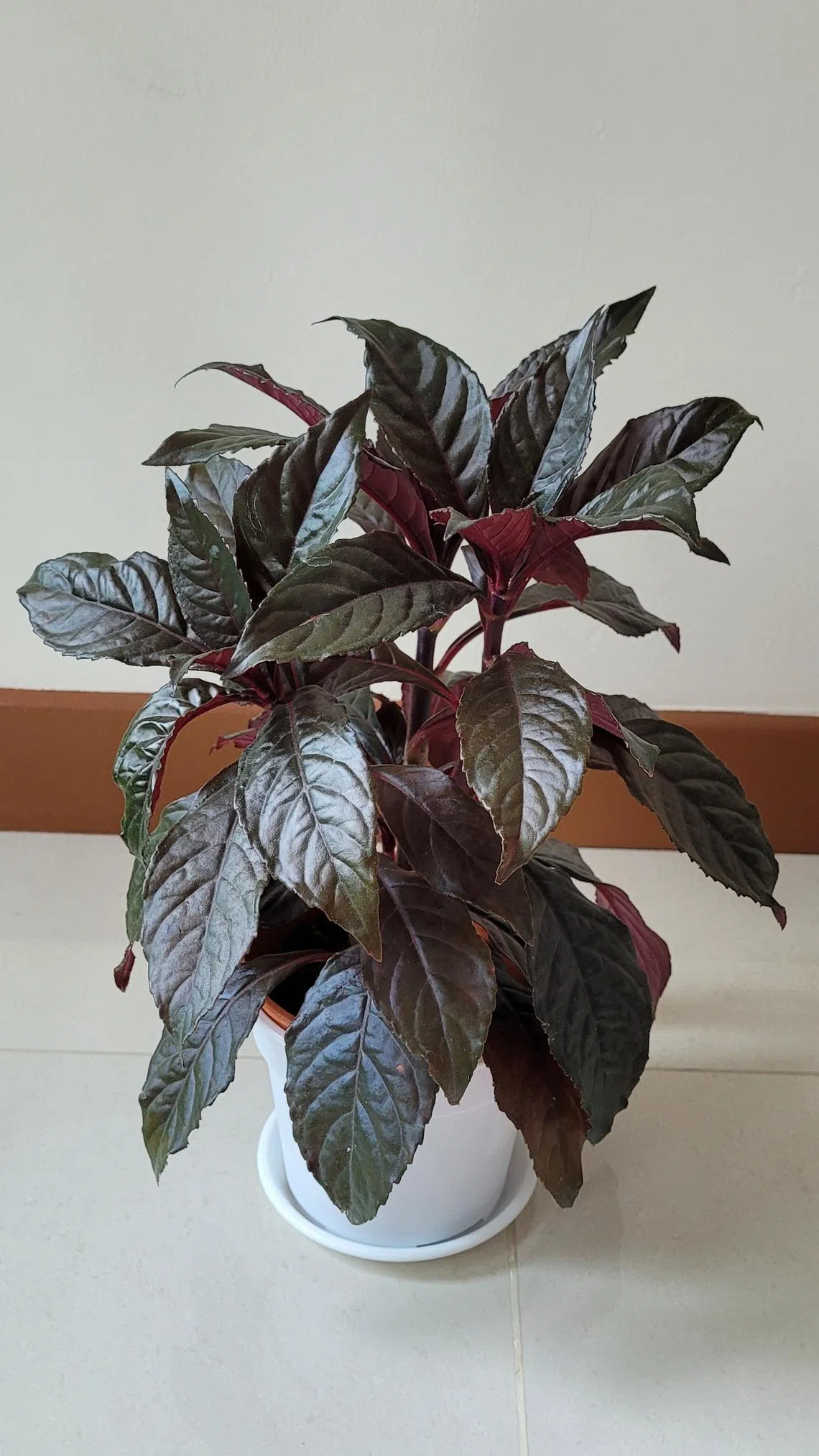
Although this plant is a shade-tolerant species, it needs more light.
PHOTO: CHIANG KIM SOI
I bought this plant in March and pruned the leaves as they dried up. New green leaves are sprouting, but are not growing well.
The plant is placed indoors, near a window, so it gets indirect sunlight. In the afternoon, I move it to a rack in the living area, near another window with some sun.
I water it every few days, depending on the condition of the soil. It used to be dry, but seems more moist lately. What is wrong with my plant and how can I save it?
Chiang Kim Soi
Your plant is botanically known as Nautilocalyx lynchii, and it belongs to the same plant family as the African violet. It is grown mainly for its attractive leaves.
It is regarded as a shade-tolerant plant and, in an apartment setting, you can grow it in a location that gets at least four hours a day of filtered sunlight.
The state of the new green leaves indicates that there is probably not enough light. A lack of light will lead to the production of soft, floppy leaves that are prone to injury and disease.
When you water the plant, do so thoroughly – excess water should come out of the drainage holes at the base of the pot – and the root ball should be allowed to dry out slightly before you water it again. The stems of this plant are succulent and prone to disease, and rot when it is kept perpetually wet.
Answers by Dr Wilson Wong, an NParks-certified practising horticulturist and parks manager. He is the founder of Green Culture Singapore and an adjunct assistant professor (Food Science & Technology) at the National University of Singapore.
Have a gardening query? E-mail it with clear, high-resolution pictures of at least 1MB, if any, and your full name to . We reserve the right to edit and reject questions.

